- 200+ Applicant Tracking Systems in 2026 – Big & Small - December 23, 2025
- Using Multiple ATS’s Doesn’t Have to Hurt Your Candidate Experience - December 22, 2025
- What’s the Difference Between a Job Description, Job Posting, and Job Ad - June 5, 2025
Starting your job posting with a question is smart and effective.
Just like it’s proven in sales that asking questions can convert customers at 10X the rate than average (see the SPIN Selling book), so too does asking questions in your job ads.
The reason? Yep, I just asked YOU the reader a question. 🙂
2 reasons that asking questions in a job ad makes sense:
- It’s more conversational. “People buy from people (not companies)” as the old sales adage goes.”
- It positions you as slightly “hard to get” (e.g. you the employer want the candidate to answer affirmatively before they read on). We all know that scarcity is effective as an influence tactic (see The 6 Principals of Persuasion by Dr. Robert Cialdini).
For more tips on writing job descriptions, check out our How to Write a Job Description — Best Practices & Examples.
7 Examples of Questions to Open Job Ads With
Note: These are in no particular order.
Do you love how it feels to encourage others?
Apple uses this question to recruit for their Apple Store customer/sales team.
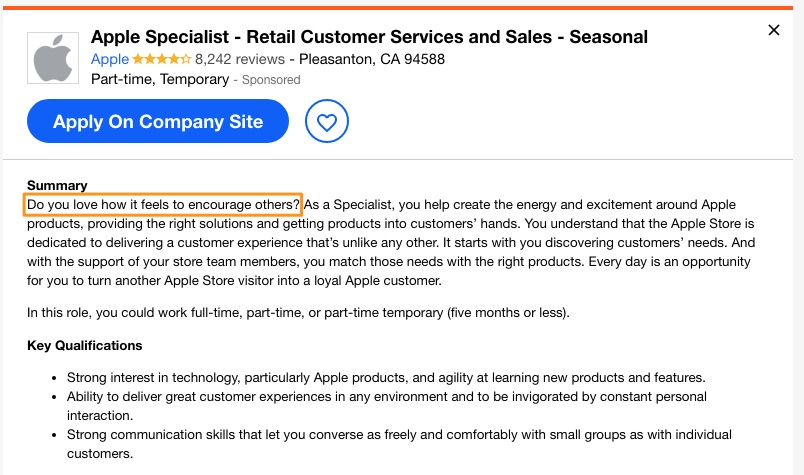
Apple is smart. They are leveraging the word “encourage” instead of “sell to” or something more aggressive.
Would you like to impact things at the leadership level?
How many jobs do you need to fill where the candidate’s work might cross leadership’s desk? For example, most finance positions might be involved with leadership one way or the other.
If you’ve got a job for someone who gets to work with leadership, then Disney’s opening job ad line below is great:
“Would you like to impact financial planning all the way up to the leadership and board of directors level?”
Financial planning can sometimes be boring. But if you get to rub shoulders with leadership, that has extra appeal.
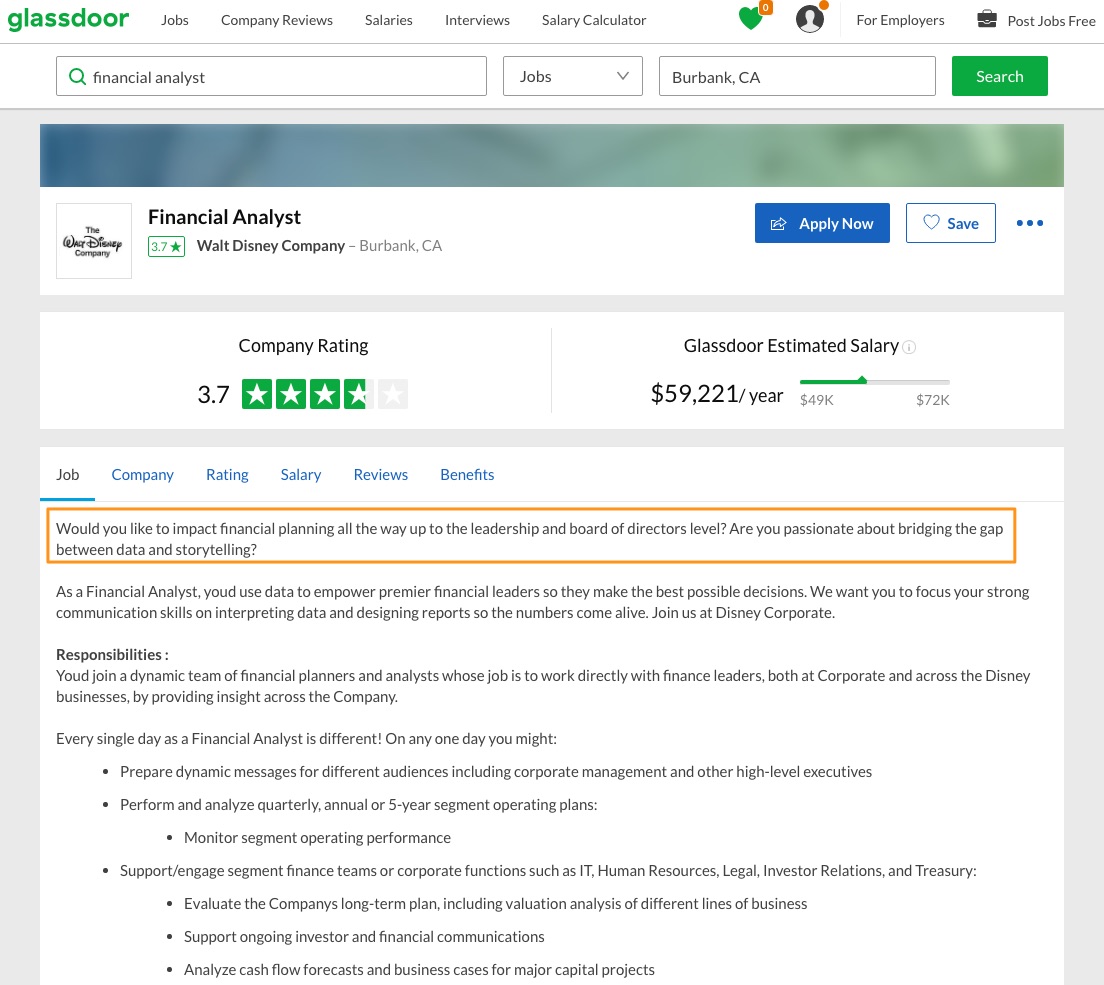
Would you like to work with a high-performing team that builds cool products?
Intel opens up this Admin Assistant job (below) with this question.
Administrative jobs are not known to be cool so it’s effective to sprinkle “coolness” into the conversation with such candidates.

“Encouraging” is a word I would definitely use to describe the Apple Store team members I’ve met. They encourage me to do what I know I already need to do (e.g. buy a simple Macbook laptop (it best met my needs) versus a spiffed up Desktop (more expensive).
Do you want to build your brand by working for a leading consulting firm…?
Deloitte gets creative with the opening line of their job ad below, huh?
They are telling junior data scientists that their (the candidate’s) brand can be built if they join Deloitte.
Clever.

Are you ready to change the world?
Cisco (below) opens up some sales positions with that question.
You might think that everyone wants to change the world. Not true. Many candidates want a safe and steady job.
By opening up with this bold statement, Cisco is positioning its employer brand as one about change/growth. They want someone bold (not conservative) for this sales job.
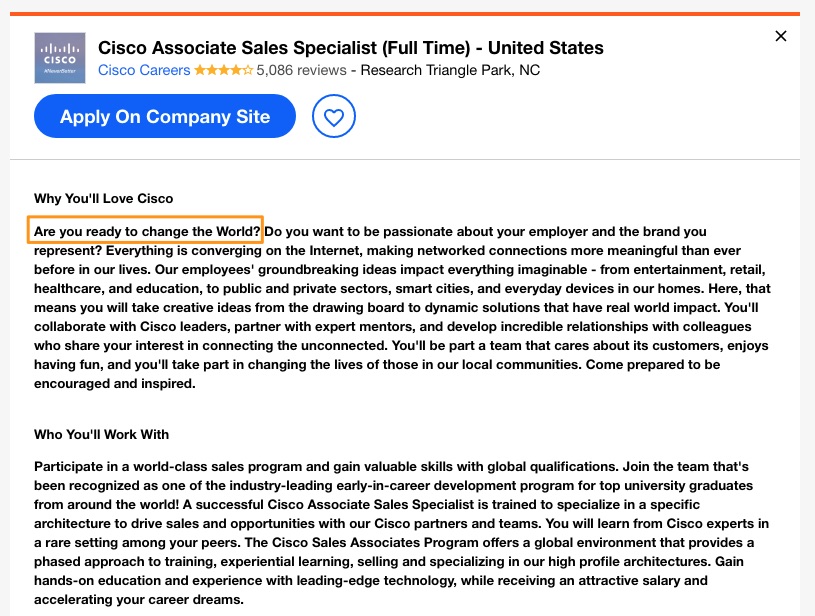
What is next in your career?
American Express uses this question in the consultative sales job below. This broad question could be applied to just about any job ad.
A-player candidates are always thinking about their next career move. It might seem basic, but opening your job ad with a simple question like this will beat the candidate engagement of just about any non-question opening.
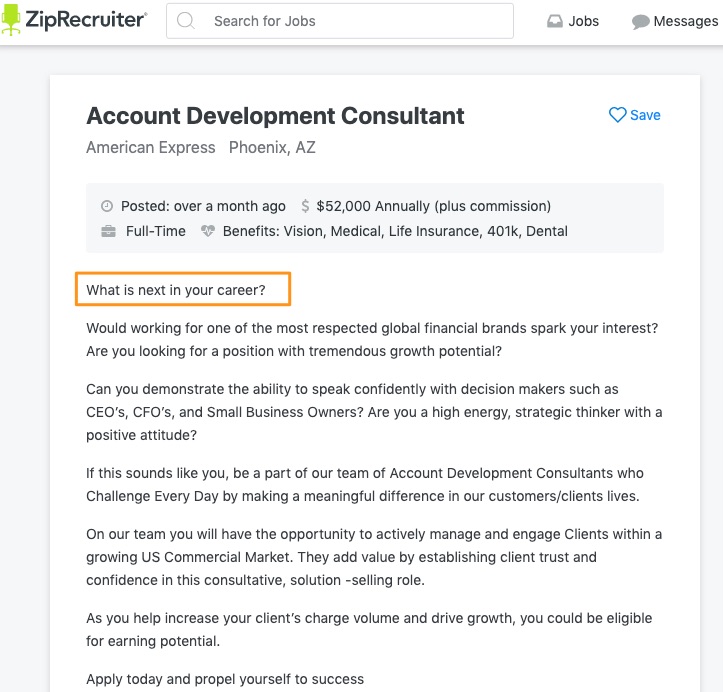
Who is [fill in the name of your company]?
“Who is Mastercard?”
Mastercard opens up many of its job postings with that question.
This is effective in Mastercard’s case, for example, because their brand used to be thought of as just credit cards. They are repositioning their brand (and employer brand) to be more focused on tech-savvy commerce. You’ll notice they then mention their “innovation lab” in the second sentence.
If your employer brand is transforming into something different, using a “Why us?” approach can be effective.
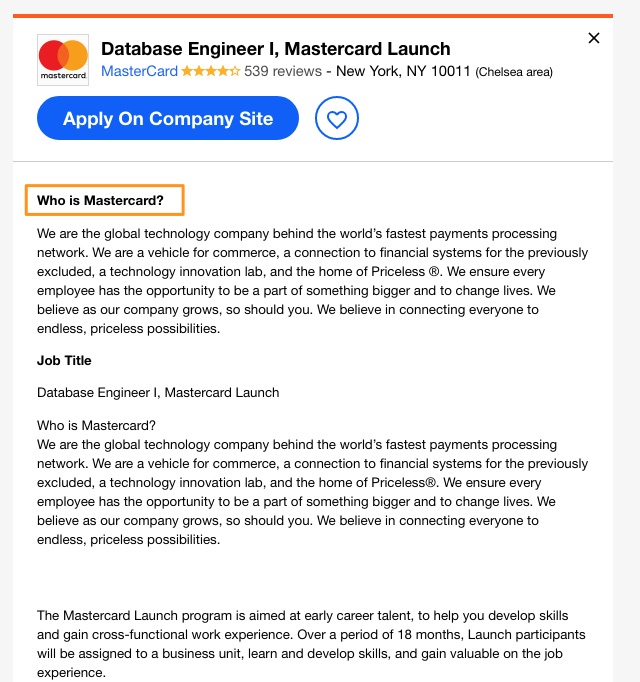
Why I wrote this?
Writing better job descriptions is core to Ongig’s mission. Our Text Analyzer software helps your hiring managers and recruiters transform the text of job descriptions. Click the demo request button on this page if you’d like to learn more.
